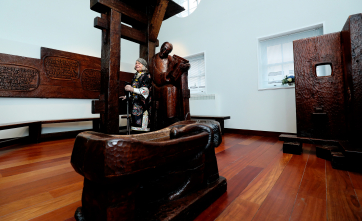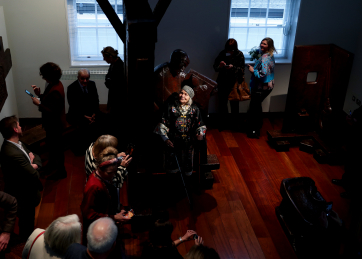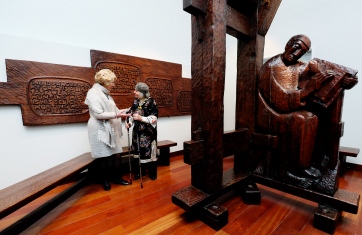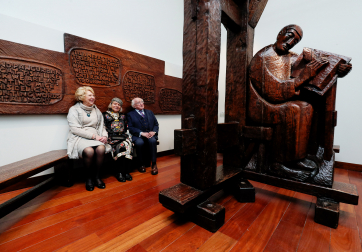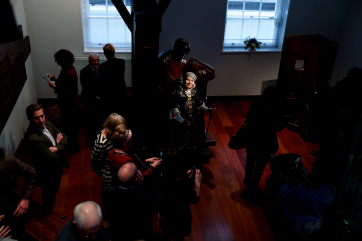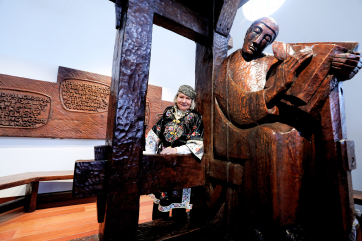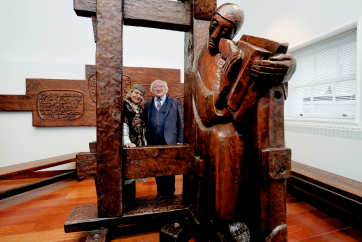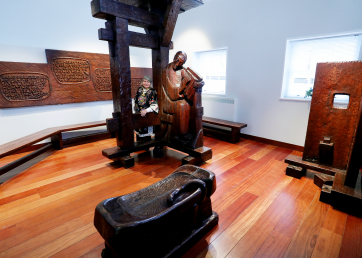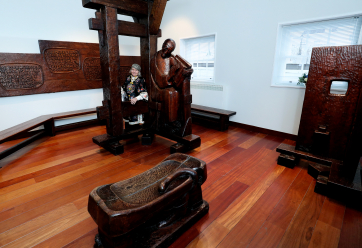Speech at the Official Opening of an exhibition of the Hugh Lane Bequest Speech at the Official Opening of an exhibition of the Hugh Lane Bequest
Hugh Lane Gallery, Monday, 20th January, 2020
I am delighted to be here today and would like to thank Dr. Barbara Dawson for her kind invitation to officially launch this exhibition of paintings from the Hugh Lane bequest.
Today is a most uplifting occasion, celebrating not only a collection of beautiful and enriching works of art, but also acknowledging an important and a fruitful partnership between the National Gallery in London and the Hugh Lane Gallery in Dublin.
It is an occasion which marks an important moment in the cultural life of our nation, a moment when we mark both the selfless patronage and creative vision of Hugh Lane and the generous spirit of affiliation that has grown between two important cultural institutions. Molaim iad is gabhaim buíochas leo.
The background to today’s event is rich, not only for art history but too the history of the debate that preceded Independence. The story of the Hugh Lane bequest is a complex one. It is a story that includes the great human tragedy that was the sinking of the Lusitania during which 1,200 people lost their lives including the Irish art dealer Sir Hugh Percy Lane, nephew of Augusta Gregory.
Earlier that year, Sir Hugh Lane had written a codicil to his will withdrawing his decision to leave this collection of paintings to London’s National Gallery, bequeathing it instead to Dublin. The codicil was unwitnessed and Hugh Lane’s sudden and tragic death in May 1915 left a huge question mark over which city could now claim ownership of a collection of paintings of great historical significance – a collection that includes names such as Renoir, Manet, Pissaro, Monet and Degas.
The journey to the cultural moment, which this evening constitutes where the future of the Hugh Lane bequest moves beyond a loan agreement between London and Dublin, to one of equal partnership, has been at times a difficult one. But it is a journey which has seen mutual respect and co-operation triumph and Dublin’s role in the care and display of the paintings will now be acknowledged world wide in all exhibitions and publications.
I believe that the Hugh Lane Gallery and the National Gallery London also intend to further collaborate on initiatives such as research and exhibition projects and that a knowledge exchange forum is envisaged to facilitate the exchange of ideas and expertise between specialist staff in both galleries.
This will profoundly benefit the experience of the importance of culture in both our countries and I would like to express my deep gratitude to all those who have played their role in bringing to fruition this constructive and greatly positive agreement.
This is just the second occasion on which the entire Hugh Lane bequest has come together beneath the roof of the Hugh Lane Gallery, the first occasion of course being in 2008 to mark the centenary of the Gallery, which first opened its doors in 1908 during a time of great change for Ireland an all its citizens. Much of this change was taking part in the cultural life of a nation where many were working to achieve a recovery of intellectual energy and artistic autonomy in a modern and forward-looking world.
It was a time of great political activism and of a cultural revival which envisioned a new future full of possibility and what is often understated is now European and outward-looking the atmosphere was. For example, all of the leading political progressives were familiar with Ibsen’s work. It was also a time, of course, when many Irish families were living in inner city tenements and politicians while Labour and Trade Union politicians were calling for fundamental social reform they were opposed by a cabal of non-unionised employers, and it can be easy to see why Sir Hugh Lane’s quest for funding for a new gallery was not likely to get the support of such wielders of power. The split would be between art, those who sought and supported, and commerce.
The most vocal opposition came from employers’ leader William Martin Murphy, a man who favoured paternalistic solutions to social problems, while support came from the socialist and trade union leader Jim Larkin who understood the importance of cultural expenditure to the structure of a truly democratic society.
By standing up for the right of all citizens to access art and shared spaces of culture, Jim Larkin was making a clear statement of the importance of enabling and supporting art in all its forms, and of creating and protecting those shared spaces of culture which are essential in the creation and sustenance of a functioning democracy.
The Hugh Lane Gallery, originally known as the Municipal Gallery of Modern Art, was the first known public gallery for modern art in the world and today stands as a testament to the generous vision of Hugh Lane and to the importance of valuing our investment in, access to, and funding for the arts and the great return, on so many levels, which such expenditure can reap.
Today we continue to live in a society where the arts are viewed, by still too many, as occupying a peripheral place and where cultural institutions are too often the first to suffer during periods of economic downturn. Indeed funding for the arts is still sometimes perceived as a luxury expenditure by the state rather than the critical investment it is in the infrastructure of a society that requires the space and imagination to better understand itself and its citizens to flourish in an inclusive way.
Hugh Lane and those, including Jim Larkin, who supported his quest to establish a gallery to house the remarkable collection of paintings which he wished to bequeath to the State, realised the profound and valuable contribution that artists make to society – how they challenge our perceptions and help to shape not only the capacities of the contemporary moment but the possibilities yet to be realised.
As a society we owe a debt to all those who fought for the establishment of this gallery which has, across a century of seismic change for Ireland, been an enduring space of culture bringing citizens together in a spirit of shared understanding and mutual regard of the democratic value of art and the artist to the world we inhabit.
So today let us celebrate another important milestone in the life of the Hugh Lane Gallery, a milestone reached in its contemporary period through respectful dialogue, unity of purpose and generous co-operation. This is an important moment in the shared cultural life of two nations, who have now come together in a shared appreciation of the inclusive capacity of culture and its power to enrich the lives of all those who are enabled to access it.
I thank, therefore, all those whose hard work, dedication and will to come together in a true spirit of democratic engagement has brought us to this moment, and I am delighted to officially open this important exhibition.

